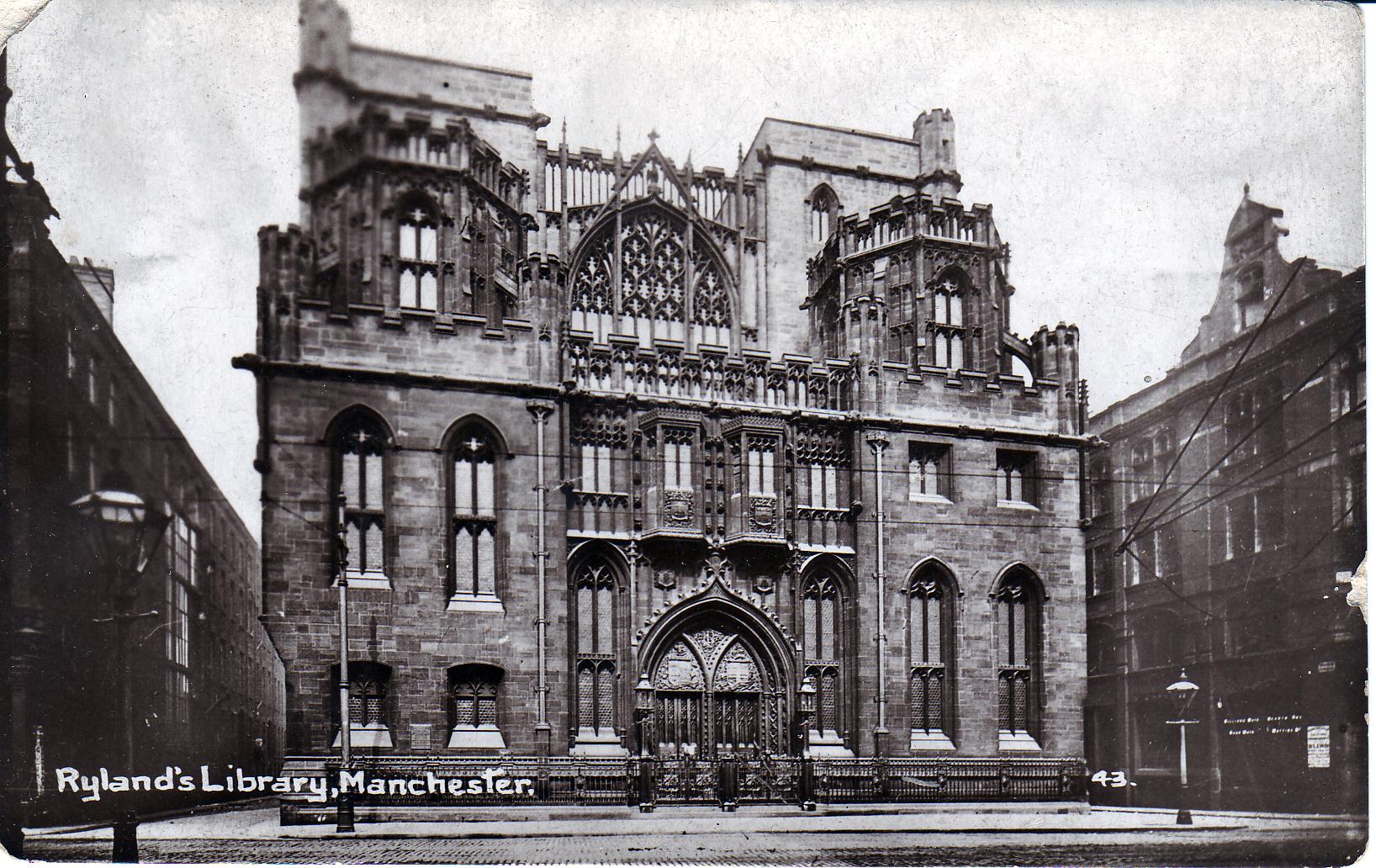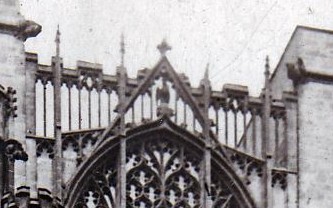James Hapgood, Bricklayer
In the early part of his adult life
James Hapgood worked as a master bricklayer.
This was common knowledge in the family when the author grew up, in particular
James had worked on the construction of the
John Rylands Library in Manchester.
It is supported
by several pieces of documentary evidence as shown below:
- A copy of a testimonal from Morrison and Sons, Wavertree: "We hereby certify that
James Hapgood,
Bricklayer has been in our employ over seven years, for the last five years as foreman on
the John Rylands Memorial Library, Deansgate, Manchester until practically conpleted
November last, since then up to the present date he has had charge of the New Electric
Power Station now in course of erection for the Liverpool Corporation in Pumpfields,
Vauxhall Road, Liverpool and now leaves at his own desire. We have always found him
a most steady and capable man and regret his loss and will always be pleased to hear
of his advancement." The testimonial is signed "Morrison and Sons, P.P. E.A.M."
- James appears as a foreman in several images (see below) taken towards the
end of construction of the John Rylands library.
- A business card, as shown below, showing his trade as a bricklayer. The card has been annotated
in pencil, and at a late date, as circa 1896? This is a guess but perhaps not unreasonable.
James' address is given as Rothwell Street, off Phoebe Street and Regent Road in Salford.
A 1980 Manchester Street map, shows that Regent Road was a major road (the A57)
in Salford running west from Manchester city centre towards Weaste and Eccles. Phoebe
Street was on the north side of Regent Road, adjacent to railway sidings. Rothwell
Street is not shown on the 1980 map.
- A letter of appointment as a bricklayer addressed to James by the Superintendent of the County Asylum at Prestwich on the north-west side of Manchester and dated 8th April 1902. "I am prepared to engage you at 9p per hour if you wish - you
can commence at any time. I may say, to a satisfactory man, this job will be at least of several
months duration."

Images from Johns Rylands construction (1890s)
The four images below show workmen at a special event, perhaps a topping-out ceremony, that was marked by
the commissioning of photographs of those involved. James appears in all four images wearing waistcoat, jacket
and bowler hat. Clockwise from top left, he appears (a) at far left, (b) second left, front row, (c) front right,
sitting on pipe far left and (d) far left, fifth row. His dress suggests he was a senior member of the work group,
e.g. a foreman as mentioned in the testimonial above. This is reinforced by his inclusion in the small group, shown
in the top right image, which is probably all the foremen on the project.
But why should we think these images comes from the construction of John Rylands? If you look behind the
workmen in all four images, you will see a carved stone head - and, in the two upper images, you can also see
parts of a carved stone frieze. This frieze, topped by the carved stone head, is the frieze high above the
entrance to the Library. You can see the frieze in the upper part of the left image below (note that the right
hand tower can be seen through the frieze thus demonstrating that it is just a decorative feature). The right
image shows a blown-up version of the left image - highlighting the frieze and the head.
 |
|
 |
| John Rylands Library when finished in 1900. Note the overhead wires for trams in front of the
library. |
|
Blow-up of the frieze shown in the upper part of the left-hand image. Compare the thin
vertical pillars in the frieze with those visible in the right background of the group of foremen shown above. |
 Last updated 11 November 2006
Last updated 11 November 2006

This work is licenced under a Creative Commons Licence.


